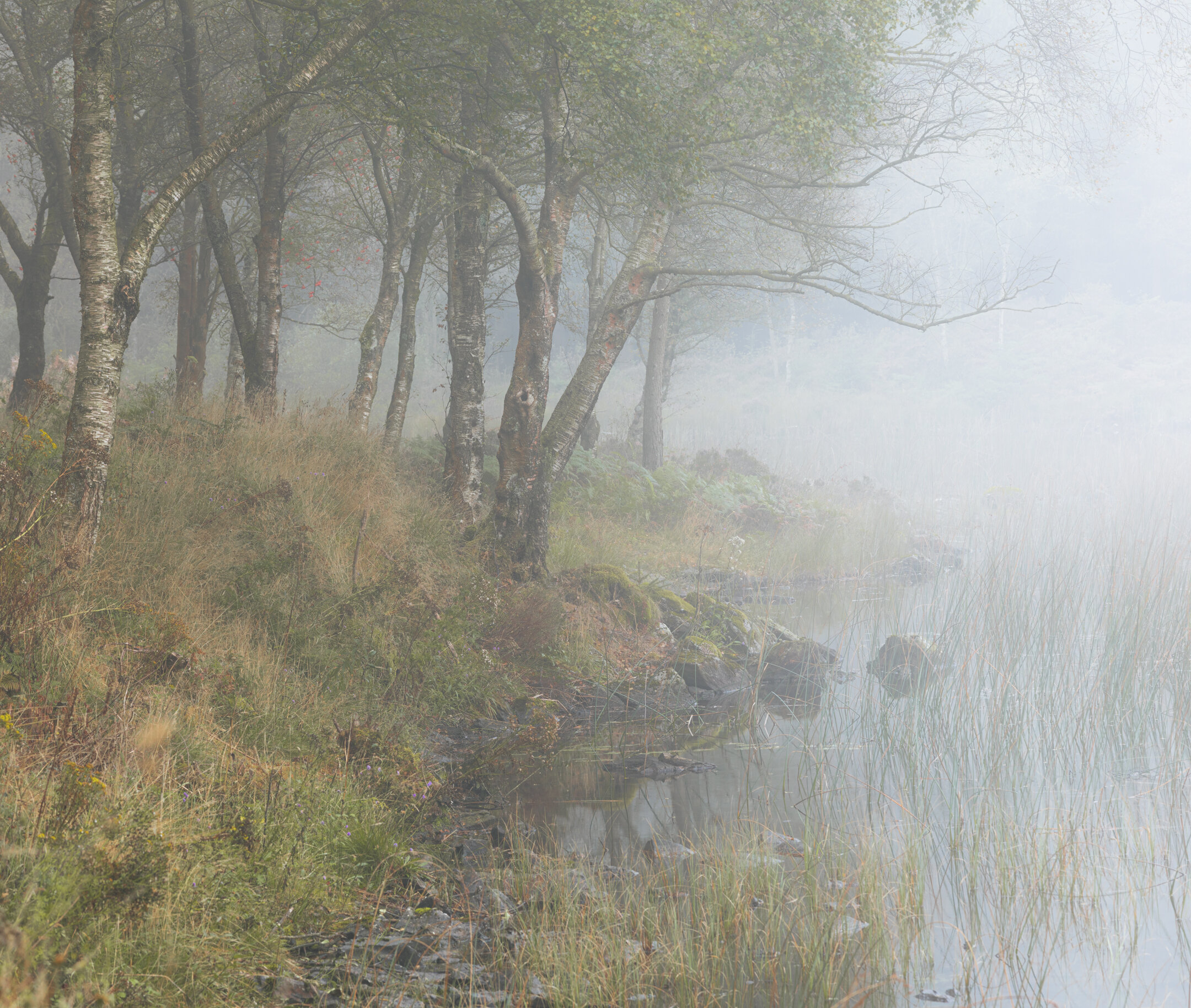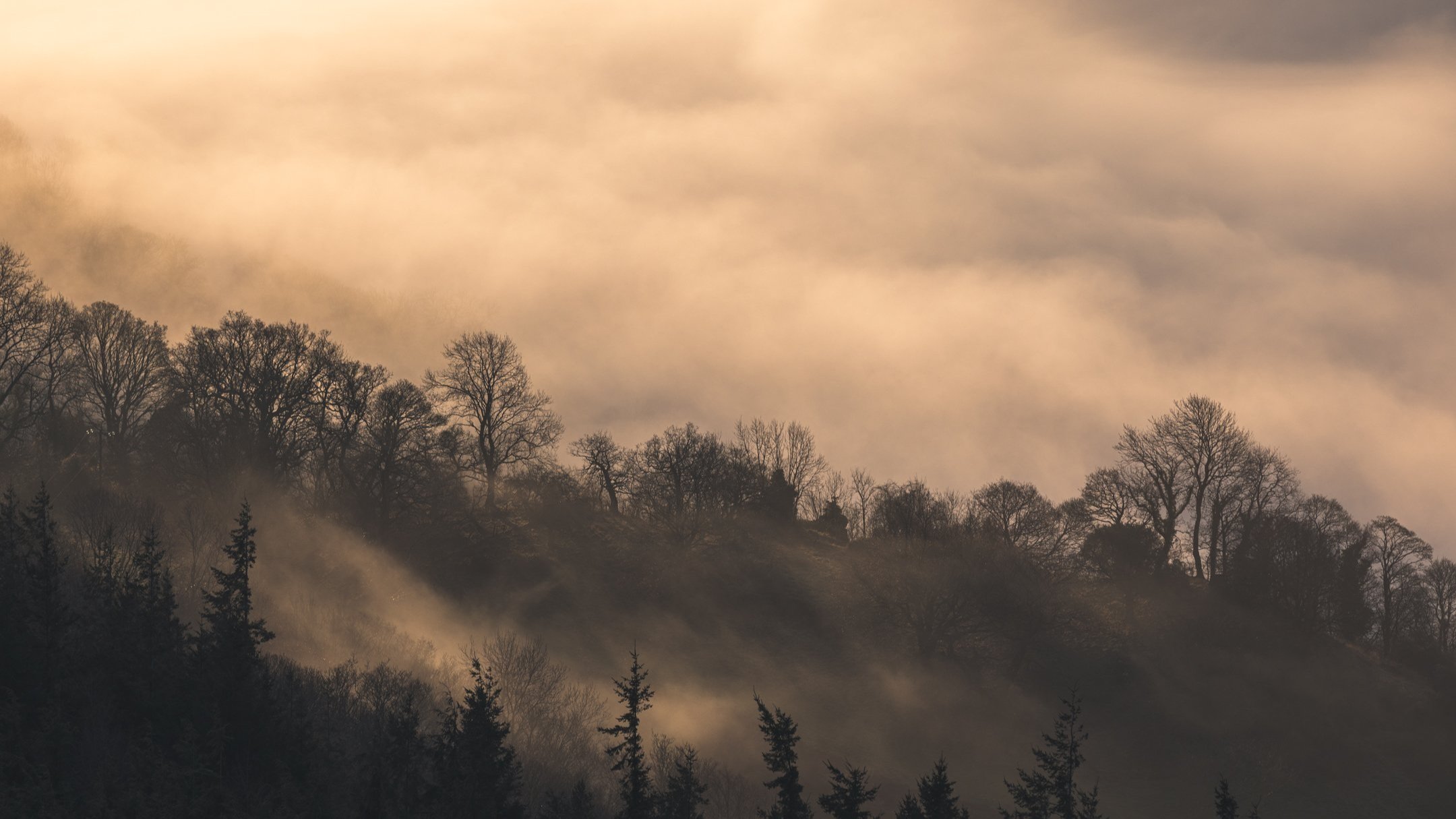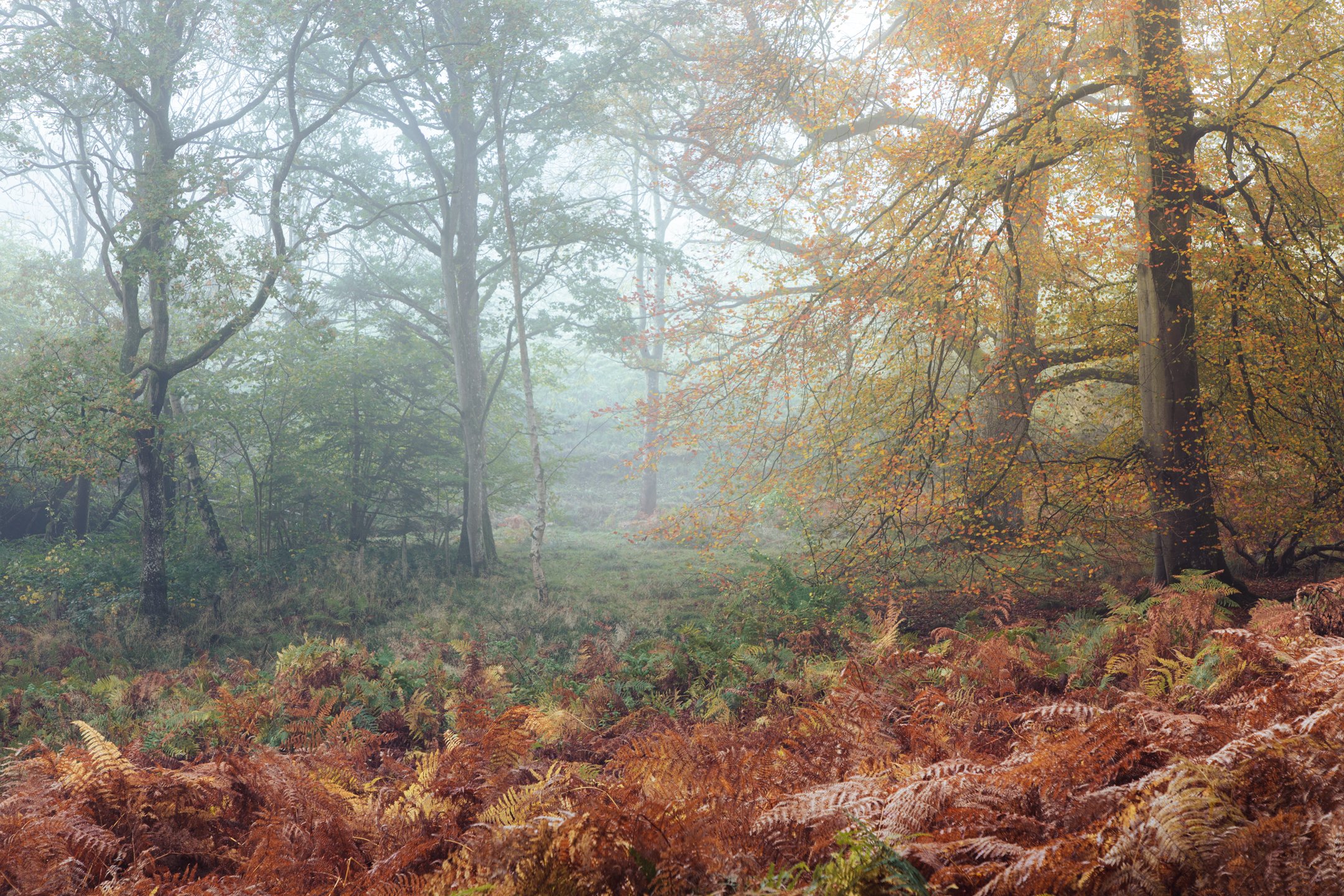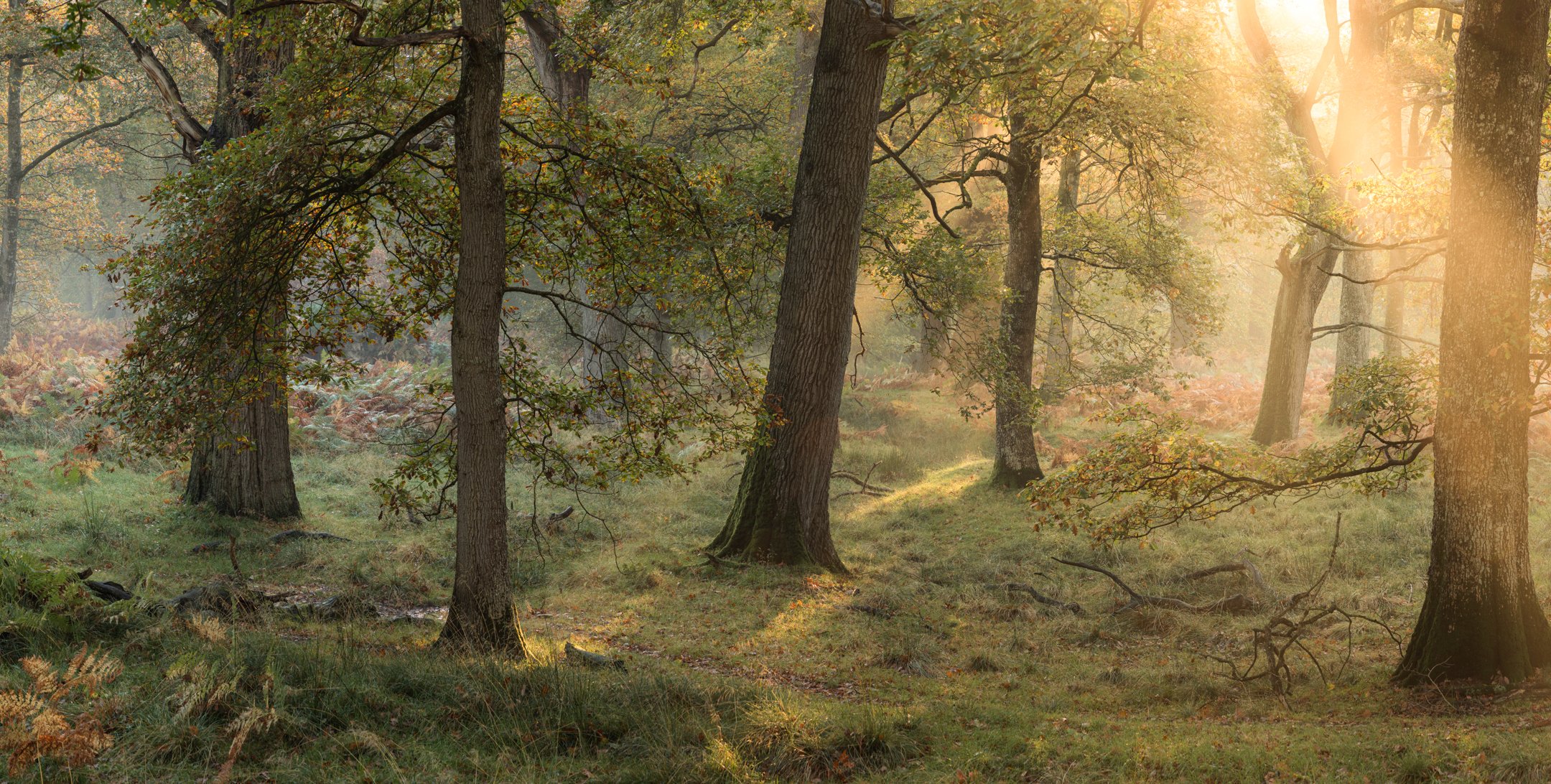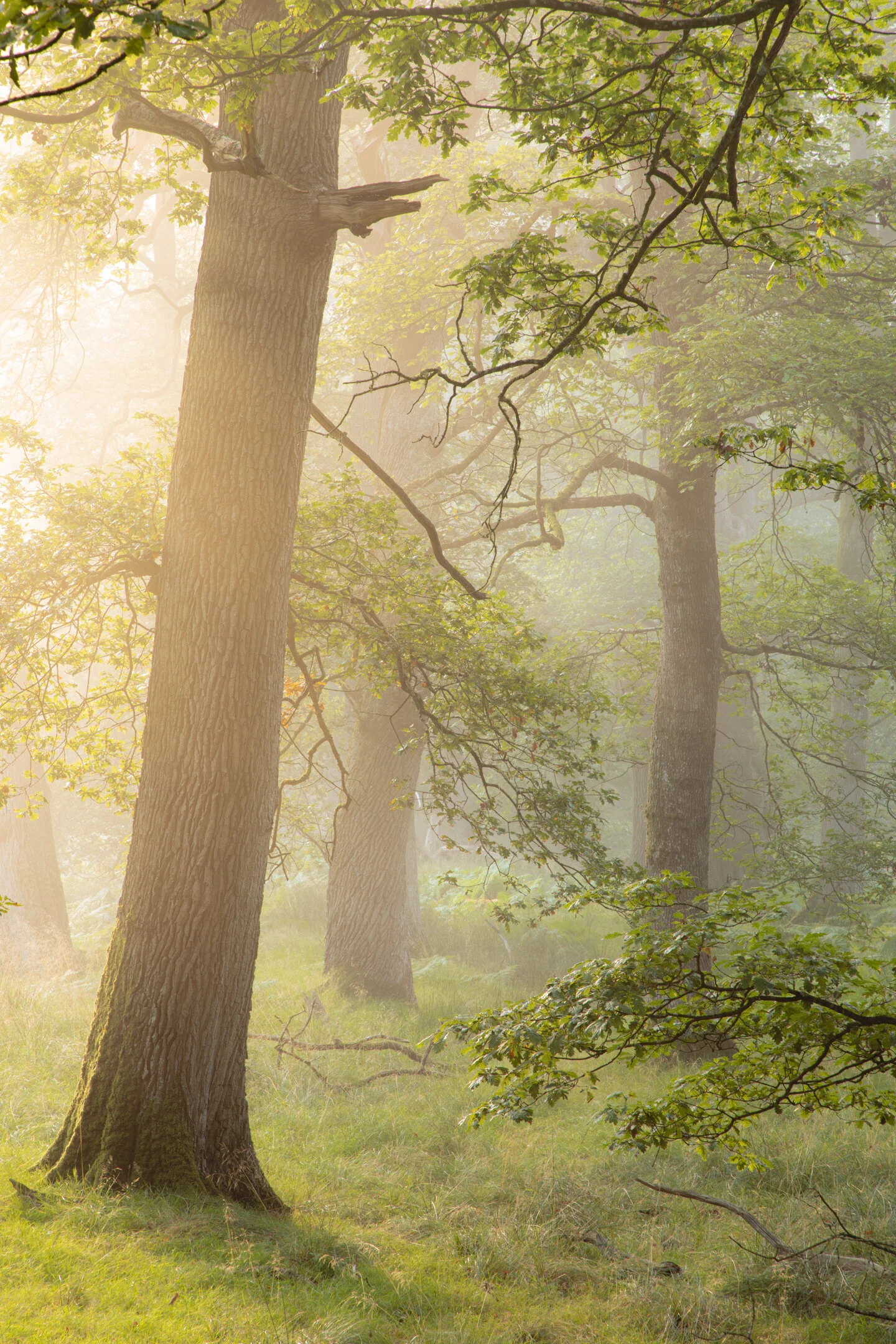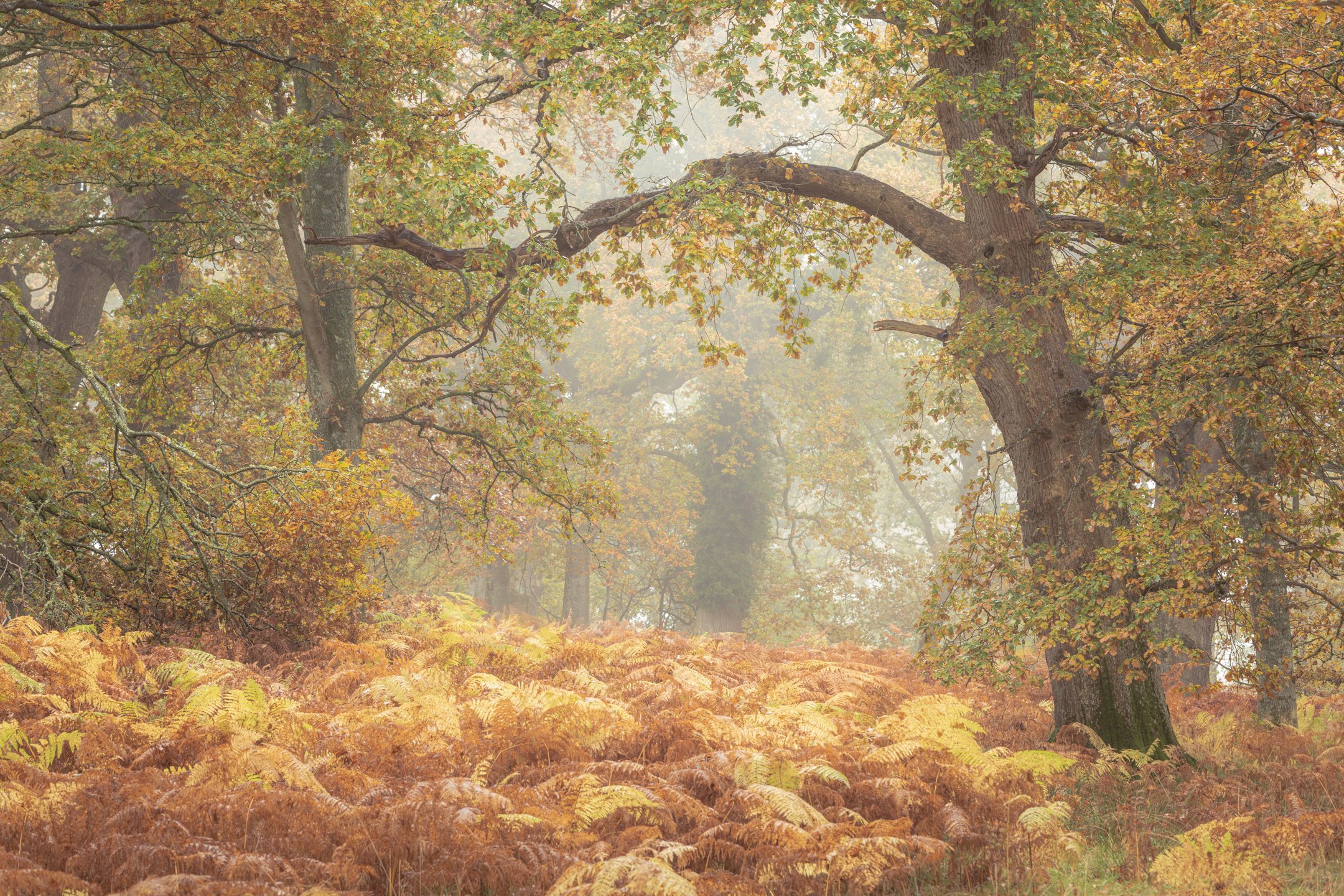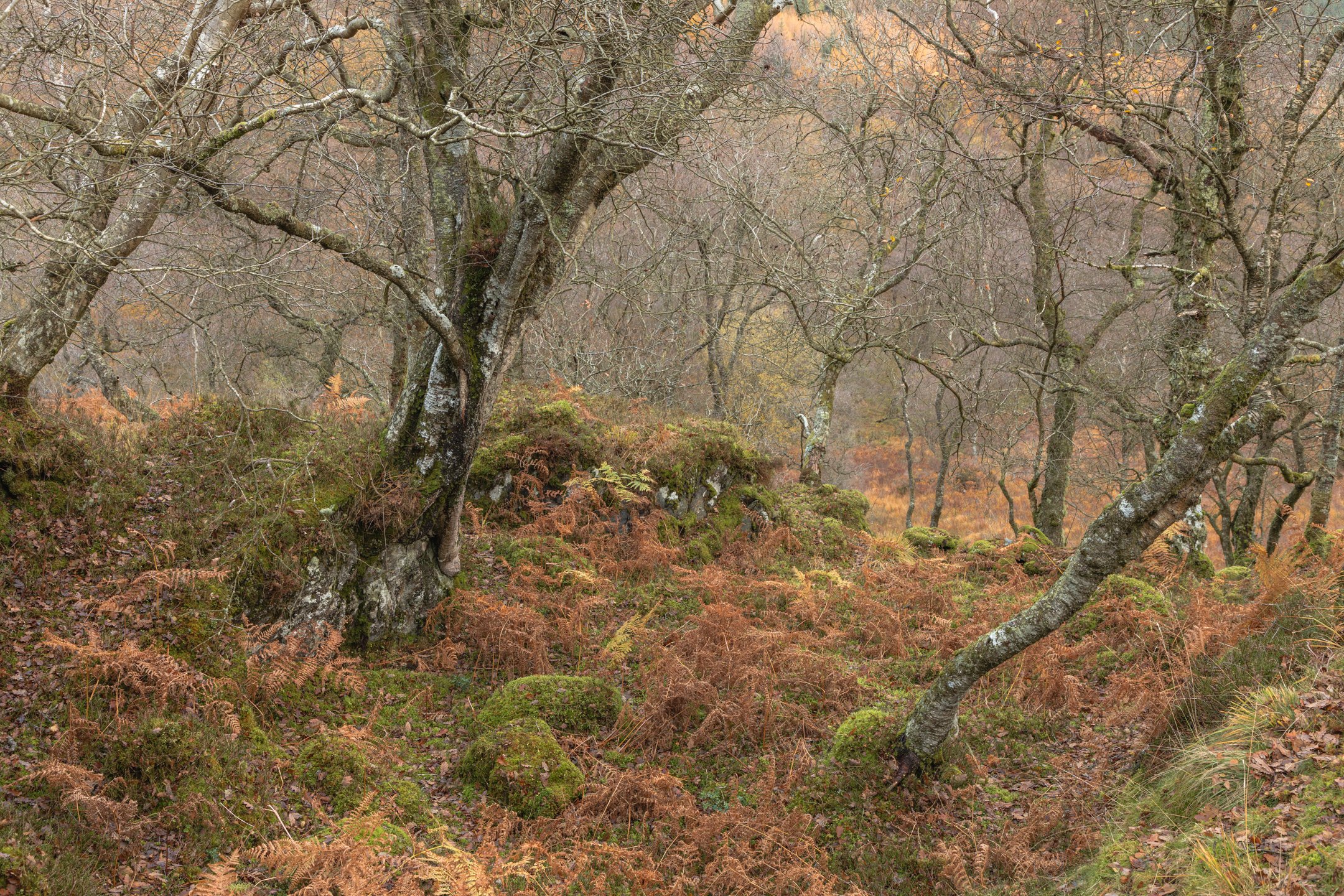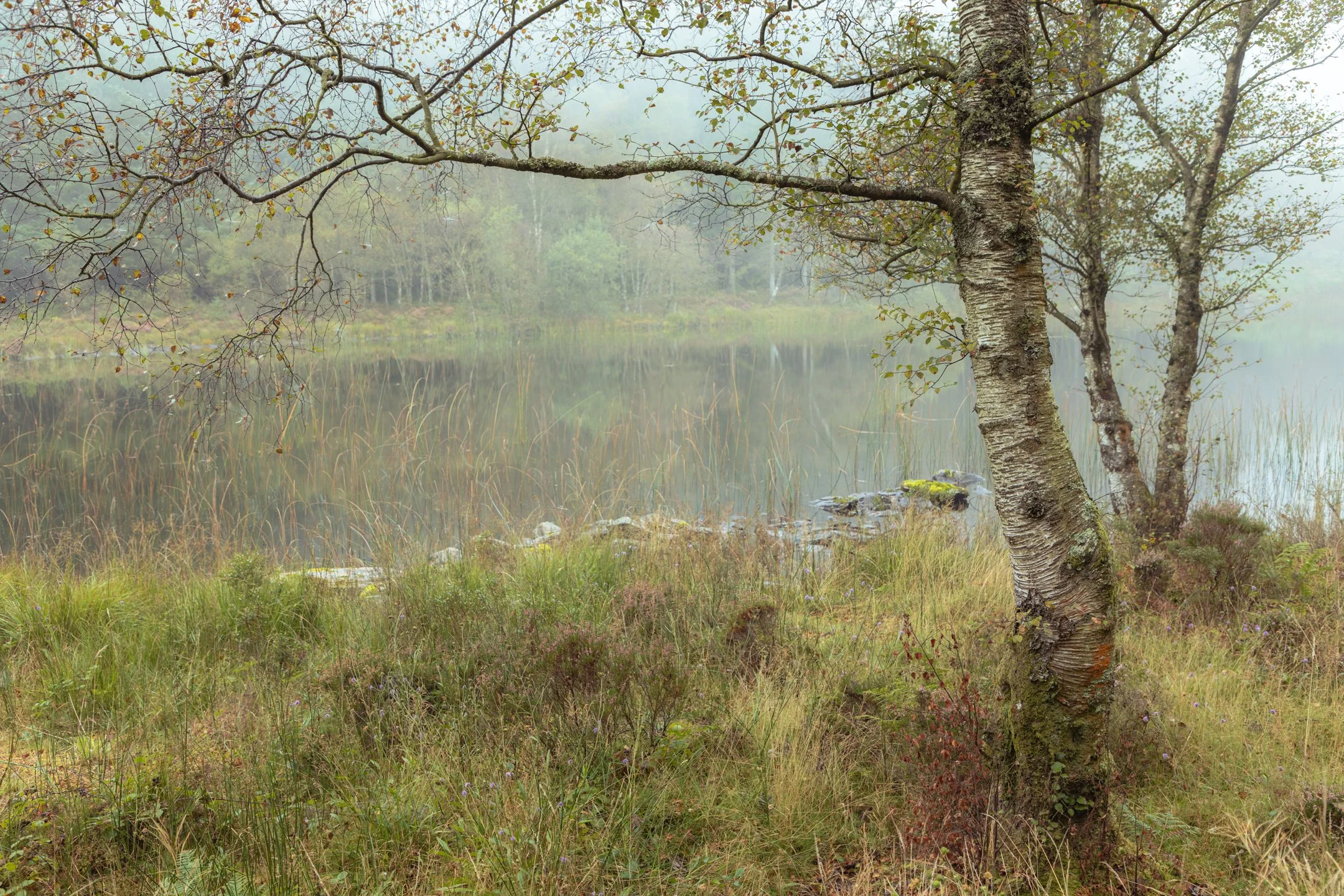How to Improve your Woodland and Forest Photography
Introduction
There is nothing quite like the silence and peace of mind that an early morning walk through a woodland can bring. With camera in hand, photographs and stories, filling the mind, just the dawn chorus for company and, perhaps, a touch of mist or fog in the air, it really is a beautiful and rather therapeutic experience that might leave you wishing that you could build a treehouse and live among the UK’s great oaks and silver birch forever.
I was introduced to woodland photography at the start of 2021. Forced to look locally for photographs because of another lockdown here in Wales, I had no other choice but to photograph and make friends with the trees and now, after some of the best days that I’ve ever had outside with the camera, I’ve managed to find an incredible amount of gratitude for the opportunities that I’ve had to explore some of Wales’ beautiful and fascinating woodland.
It has always been a part of my vision as a photographer to inspire other people to get outdoors and make the most of their time in nature. Perhaps even help them to discover their own inner artist in the same way that photography has helped me to unearth mine over the past few years. It’s why I love writing these blog posts and articles. They act as a place for me to share my knowledge and do my part to help humanity in moving forwards by forming a more intimate connection with the planet that houses us all. I really hope that you are able to take something away from this blog in the same way that you might have from the last one that covered landscape photography as a whole. I’ll leave a link here for anyone that would like to read ‘Ten Top Tips to Improve your Landscape Photography.’
Understanding Light in the Woodland
Light. Where would we be without it? I wouldn’t be here to write this blog, that’s for sure. Light quite literally gives us all life here on earth and that is one of the reasons that I like to capture it. But how exactly do you capture it in order to create a compelling photograph? There are so many different ways and so many different types and even colours of light; think about the colour of ‘golden hour’ light at sunrise compared to the harsh, white light on a summers day or the soft, pastel colours during ‘blue hour’. It’s our job as photographers to understand how we can use light to create different effects in our photography. Shooting into the light, shooting with the light, shooting across the light, reflected light, front light, back light, soft light, harsh light, diffused light, dappled light, even light. These phrases might be familiar to you but do you understand the differences that each technique can make to your photographs?
Take a look at both examples below, taken just one day apart. Notice how different light can completely transform a woodland scene.
(click to enlarge)
Example 1: created at 10am on an overcast morning. ‘Even light’ means that there is minimal contrast between the highlights and shadows in the scene.
Example 2: created at around 8.15am just a day later when the sun was still close to the horizon. Low light creates strong shadows and the softness of the early morning light interacts with the scene to create some lovely colours throughout.
Can you tell from the areas of shadow which direction the light was entering the woodland?
It’s not that one form of light is necessarily better than another, it’s for you to decide which kind of lighting suits a particular scene, depending on the story that you’re trying to tell. If you’re someone that prefers a particular colour scheme or style to your photography, then it might be more important for you to stick to rigid rules when it comes to the times and conditions that you shoot in. For me, I like to make the most of a variety of conditions as I believe that there are always images to be created. We are in the UK after all and so you have to learn to embrace whatever weather Mother Nature provides. The example below is where I think the even light helps to tell a compelling story and overall feel and mood to the photograph that I recently created in Snowdonia National Park.
Diffused light is often a woodland photographers favourite kind of light. Early morning fog acts as the perfect diffuser, softening it as it enters into a woodland to cast a lovely glow onto the trunks of trees. This kind of light makes for some of the most delicate and atmospheric scenes, it adds mystery and helps to create a lovely transition from light to dark across the image.
2. Create Symmetry, Patterns & Balance
The use of the image above leads me very nicely onto this next point. You have spent enough time walking to get to your woodland destination, I’m sure you can expend a little extra energy to move a few steps around your composition in order to balance out those trees and create some symmetry in your photograph. This goes hand in hand with one of my later points. Slow down! The world moves fast enough these days and the woodland provides the perfect place to relax and centralize yourself. Don’t rush and click the button in the first composition that comes to mind. Take some time to look around the frame to see if there is anything in there that you think catches your eye and distracts you from what you would like the viewer to look at. This is why I set my tripod up nine times out of ten in the woodland and it’s usually after I have given myself time to take a good look around the scene before even thinking about the camera and settings. Some of the things that I am looking for:
What, if anything, is my main focus? Is there a particular subject that I would like to isolate and how can I remove any distractions that might surround it?
Where and how is the light falling and how is this going to change within the time that I am there? Is it worth holding on in anticipation of the light moving into a better position?
Does my scene look balanced with the subjects given enough space between each other? In the above photograph, the scene as a whole was my subject and I have tried to space the trees evenly throughout, allowing the central trees in the distance enough room which I hoped would give the woodland some depth.
3. Head Out for Sunrise
There is no two ways about it, sunrise brings the best conditions for woodland photography. Not only do you get to enjoy the song of the birds with a coffee in hand while everyone else is sleeping but you will also get to witness the most incredible, atmospheric light as it pierces through the fog. This kind of light makes for the best photographs and if you ask any woodland photographer when they like to go out and shoot, the chances are that they will tell you to be out while it’s still dark to ensure that you are on location and ready for the first light of the morning. I guarantee you that a walk in the woods will always get your day off to the best of starts. A short and sweet one for point number three. Get out early and watch your photography level up!
4. Slow Down. Be Present With Your Surroundings
I touched upon this point earlier in the blog post and it was also one of the points that made up my ‘Ten Top Tips to Improve Your Landscape Photography’ blog. I really can’t emphasise enough how much this has transformed my own photography. Nigel Danson, one of my favourite photographers from my early days talks regularly about how he takes an apple with him on every photo trip, which gives him a good reason to stand there, slow down, eat the apple and just take it all in. For me, I like to take a flask of coffee, a book and give myself ten or fifteen minutes away from all things photography while I’m out on my missions. The stories that I read, whilst out there living my own story, enable me to form a deeper connection with the places that I visit and I am sure that this has been a major influencer in changing my photography over the past year or so. I will also force myself into the habit of observing a scene before I set my tripod and camera up. This is all well and good, providing that you get to location well before the best light arrives.
5. Find a Woodland and Don’t Stop Photographing it
The six photographs above are part of a collection that I have been working on over the last few months from the same oak woodland here in Mid Wales. Long gone are the days of driving 70 miles up to the Ogwen Valley at every opportunity. The past couple of years have made a lasting impact on me and my photography and I choose to stick to many of the local areas that I hadn’t even visited until 2020. Not only have these local explorations made a huge difference to the quality of my photographs but each photograph holds sentimental value as they were created within 15 miles of my home. Frequent visits to a woodland will give you the opportunity to get to know it intimately. You might form a strong bond with certain scenes that bring you inner peace. You might make friends with some of the ancient trees that provide you with shelter from the rain during a storm. This ties in with one of my earlier points too; more time spent in the woodland will mean more opportunities to study light. None of these photographs would have existed if I hadn’t been in the woodland twenty-something times before, standing in many of the same spots, observing how the light moves through the scene. All of this will lead to a deeper connection with the woodland, which will in turn lead to much better photographs.
Do you want to Create Better Photographs?
If so, then check out my new comprehensive e-Book on composition.
This is Volume 1 of my comprehensive 125+ page eBook that contains insights into my creative approach to landscape and nature photography. Each section has multiple examples and is applicable to all standards of photography. Whether you are looking to make a step change in your photography, or just looking for ideas to improve your compositions when out in the field, this e-Book contains the tools to help you.
The eBook contains detailed information on:
How to use different focal lengths to help tell meaningful stories in your photography.
Understanding of ‘rules’ in photography and how to break them to find and develop your own creative style.
Creating depth in your photographs using foregrounds, different apertures and light.
And many many more useful tips including bonus sections on understanding light and using emotions and storytelling.
Purchasing volume 1 of this comprehensive e-Book will give you lifetime access to further volumes that will be released as my knowledge increases and I receive feedback for customers. If you purchase this, please feel welcome to review and provide feedback so that I can make improvements to future volumes.
6. Analyse Your Photographs
You probably have your own contrasting opinions concerning the good and bad of social media, as do I, but one positive thing that platforms like Instagram provide us with is the opportunity to regularly look over and quickly analyse our portfolio of photographs. I’m a little guilty of doing this perhaps a little too often but I feel like this obsession coupled with an analytical mind has enabled me to progress quickly as a photographer in my journey so far. I’m also making lots of judgments, sometimes subconsciously, about my photographs as I import them onto my computer and begin the editing process. It is here that you are able to zoom in to see all of the smaller details around the frame; maybe you can spot a tree in the distance that needs to be brought to attention on your next visit or you realise that the distorted look from your wide angle lens makes your finished composition look a little strange or off balance. You can then focus on correcting this by using a different focal length or you might decide to try something completely new when you decide to visit the woodland again. Analysing photographs is just as important as getting out there and creating them, in my opinion. Especially as progression is one of my major philosophies in life and is something that I am always striving for in my own work as I move through this journey.
7. Look for Frames and Pathways That Lead the Eyes
A photograph can be many things. In some cases, it’s the magical lighting that makes it special. For others, it’s colours or a certain mood. For many photographs, the journey into the image and then around a scene is what makes it special. In many of my woodland photographs, I try to include windows and frames between tree trunks and branches that can act as a place for the eyes to travel and sometimes I like to portray the idea that the trees are guiding us towards somewhere or something. You might often hear photographers talk about ‘leading lines’ as being one of the most important elements in a photograph. There are times where I agree that they are but I feel like they can be overused and this statement sometimes makes people feel as though a photograph fails if it doesn’t incorporate them. I believe that this is especially true in woodland photography, where I don’t believe that leading lines play much of a role in creating a compelling image. The story of the trees and the mood that you capture is far more important element than any of these rules. There are many ways to take the viewer on a journey in your photographs and incorporating frames is a great place to start.
8. Pay Attention to Timing
Photography is a never ending process of learning and just recently, I was reminded of the importance of waiting for the right moment when opening the shutter on my camera. This woodland is one that I have been visiting regularly since discovering it in the summer of 2021. The first photograph below is how the woodland looked under normal light on that overcast autumn morning. Compare that with second image with its rich, vibrant colours and soft pink, orange light that was cast for a few short moments on the ferns and trunk of the large ancient silver birch tree. This light was cast from the sunrise as it reflected off the low clouds after a brief clearing on the horizon. It serves as another reminder to me to always be attentive of what is happening around me as I am outdoors searching for photographs. We often only have a brief moment in time to capture the best light and quite often, once this light is gone, it is very difficult to find any like it again.
9. Minimise Distractions
It is always worth paying attention to the smaller details when you’re composing your shots. Get things right in your frame while in the field and it will mean less time cleaning a photograph up in your post-processing software.
The main distraction that I find I have to deal with when composing a woodland image are patches of bright white (over-exposed) sky that appear because I’m exposing for what is usually quite a dark scene. These patches of white sky can take the viewers eye away from where it is meant to be. This is why mist or fog is a photographers best friend when in the woodland as it helps to create a soft graduation between lighter and darker parts of the image and helps to accentuate focus on the target subjects within a frame.
Other things to watch out for, in order to keep a viewers attention where you want it, are stray branches, leaves and other foliage that might creep in at the edges of your frame. I always ensure that I take a few moments to weigh up whether something adds to my composition and provides further interest, or whether it takes away from it and acts as a distraction that I need to find a way to remove. This can be done by moving around or by using the zoom function on your lens. There may be times where you are unable to remove an unwanted object within the frame, in which case Photoshop’s ‘spot healing’ tool is great to use in your post-processing workflow.
10. Introduce Characters & Use Them TO Tell a Story
This gigantic oak tree is giving orders out to these young beech and oak trees that surround it. Can you see? I think that I understand where J.R.R Tolkien got his inspiration for the Ents in Lord of the Rings now that I have spent enough time outdoors in nature. Imagination has added a whole new dimension to my photography and I wrote about how a conversation with my Nan at the start of this year forced me to look within my photographs for a storyline more often. You can read about that here. When it comes to trees and woodland, there are always old and characterful trees to be found and these are some of the first things that my eyes are drawn to upon my searches around a new area. The oldest trees often tell the greatest stories as they contain centuries of history. I regularly get up close and personal with some of these trees to see some of the fascinating species that they act as a home for. They are vital for our own continuation as a species and so these veteran trees and our countries ancient woodland must be respected. My documentation of some of these trees that I stumble upon on my journey through life, is my way of appreciating their beauty and showing my respect to them for giving me life here on Earth.
11. Find Interactions and Capture a Relationship Between Trees
Anthropomorphisation, the attributing of human characteristics to non-humans, is extremely effective and, for me, capturing trees’ relationships with each other is one of the most powerful elements when creating woodland photographs. How about the image above which I duly named ‘The Orchestra’? It tells the story of a young conductor at the front composing a final piece with the snowfall appearing as confetti being thrown from the audience during the encore and rapturous applause. Below, is a photograph that I named ‘First Dance’ which tells the story of one tree leading the other across the ballroom. I placed my camera in such a way that meant the trees appeared to be holding hands and waltzing into the light.
12. Get off the Beaten Track
It is very rare that a stunning composition will hit you in the face as you walk along the footpath. Besides, if the composition is that obvious then the chances are that it wont be a very original one. In my opinion, the most rewarding photographs have been found when I explore and head out into some of the more unknown parts of the woodland. This is often where you will find some of the more gnarly and interesting trees hiding and things tend to look that little bit more wild. Every woodland has its own characteristics and unique qualities. It’s your job to go and find them.
13. Build a Portfolio of the Same Subjects
Perhaps the biggest change in my photography has come as a result of my focus on creating diverse portfolios of the same subjects. This congregation of silver birch trees in Snowdonia National Park has been my favourite project within a project. I fell in love with the harmonious nature of the lakeside birches during a walk last summer, and I haven’t stopped photographing them since. So far, I have 8 or 9 photographs, all very different in their look and feel. Each time I visit, I am tasked with creating something different to what I have already in the portfolio. This challenges me to approach the subjects in a changing manner; either working with a new angle, focal length, or by photographing at a different time of day. It will be interesting to observe how I am photographing these trees in years to come, as I look to push my own creative boundaries and evolve my ideas even further.
14. Leave the Area as You Found It
Pick up your rubbish. Try not to tread on delicate plants, fungi and the rest. Be quiet enough that you don’t disturb animals. And absolutely don’t break things that might be in the way of your composition. I also try keep to a minimum the moving of objects such as fallen branches. I’ve made the mistake of moving one before only to find that I had disturbed habitats underneath. It is not a nice feeling and I now restrain myself from doing it. There are far more important things in this world than photographs.
Summary
I hope that you found this blog post on how to take better woodland and forest photographs helpful. Woodland photography can be frustrating at times and you’ll often ask questions of yourself and find yourself scratching your head wondering where the next photograph is going to come from. But when the conditions strike, boy does it make the whole process worth it. In those moments, you need to sit back and soak it all in. Bask in that golden light and breath the fresh woodland air into your lungs. Those are the mornings that make me feel most alive, and I hope that they are now able to do the same for you as you take some of these tips onboard and get out there to create.
I would love to see what you are able to come up with when you venture out into the woodland and forests in the coming months. You can find me in the following places where you can feel free to share your photos with me via dm’s or tags:
You might also like: A Year Amongst Trees





